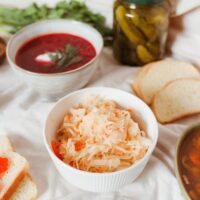Accurate measurement is a cornerstone of both scientific and culinary endeavors. Whether you’re baking a cake or conducting a laboratory experiment, knowing how to convert milliliters (ml) to grams is essential. This seemingly simple task can be surprisingly complex due to the varying densities of different substances. This article delves into the intricacies of converting ml to grams, exploring the fundamental principles, the factors that can influence accuracy, practical applications, and the best practices for achieving precise measurements.
Understanding the Basics of ml to gram Conversion
Converting ml to grams is a common task that requires a clear understanding of the relationship between volume and mass. Unlike milliliters, which measure volume, grams measure mass. The conversion between these two units depends largely on the density of the substance in question.
Density is defined as the mass per unit volume of a substance, typically expressed in grams per milliliter (g/ml). For example, water has a density of approximately 1 g/ml, meaning that 1 milliliter of water weighs 1 gram. However, this straightforward conversion does not apply to all substances. For instance, oil, which is less dense than water, weighs less than 1 gram per milliliter.
To accurately convert ml to grams, one must know the density of the substance. The general formula used is: mass (grams)=volume (ml)×density (g/ml) Understanding this formula is the first step towards mastering precise measurement conversions.
Factors Affecting the Accuracy of ml to gram Conversion
Several factors can impact the accuracy of ml to gram conversions. One primary factor is temperature. The density of substances can change with temperature, affecting the conversion rate. For example, water’s density decreases slightly as it warms, meaning the same volume will weigh less at higher temperatures.
Another factor is the purity of the substance. Impurities can alter the density, leading to inaccurate conversions. For instance, a solution containing dissolved salts will have a different density compared to pure water.
The equipment used for measurement also plays a critical role. Precision tools such as graduated cylinders and analytical balances ensure more accurate measurements compared to less precise tools like measuring spoons or kitchen scales.
In industrial and laboratory settings, these factors are meticulously controlled to ensure accurate ml to gram conversions. In everyday scenarios, being aware of these variables can help improve the reliability of your measurements.
Practical Applications of ml to gram Conversion in Everyday Life
Converting ml to grams has numerous practical applications in everyday life, particularly in cooking and baking. Recipes often require precise measurements to achieve the desired results. For instance, knowing the exact weight of liquids such as milk or oil can significantly impact the texture and flavor of a dish.
In the pharmaceutical industry, accurate ml to gram conversions are critical for dosing medications. Liquid medications need to be measured precisely to ensure the correct dosage is administered, highlighting the importance of accurate conversion.
Even in home DIY projects, such as making soaps or candles, knowing how to convert ml to grams can ensure consistency and quality in the final product.
Here are a few common scenarios where accurate conversion is essential:
- Baking: Ensuring the right balance of wet and dry ingredients.
- Cooking: Measuring oils, broths, and other liquid ingredients accurately.
- Pharmaceuticals: Accurate dosing of liquid medications.
- DIY Projects: Consistent measurements for homemade products.
Understanding these practical applications emphasizes the importance of mastering ml to gram conversions.
Tips and Tools for Accurate ml to gram Conversion
Achieving precise ml to gram conversions requires the right tools and techniques. Here are some tips to help ensure accuracy:
- Use Accurate Measuring Tools: Invest in high-quality measuring tools such as digital scales, graduated cylinders, and volumetric flasks.
- Calibrate Your Equipment: Regular calibration of scales and measuring devices ensures their accuracy.
- Consider Temperature: Always account for temperature variations, especially when measuring liquids like water or oils.
- Refer to Density Tables: Use density tables for various substances to find accurate conversion factors.
- Practice Good Measurement Techniques: Avoid parallax errors by reading measurements at eye level, and ensure that containers are dry and clean before use.
By following these tips and utilizing the right tools, you can achieve precise and reliable ml to gram conversions in any setting.









